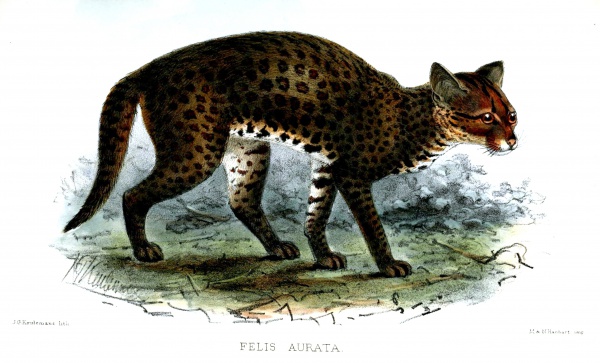Facts About African golden cat
The African golden cat is a captivating wild cat species native to the rainforests of West and Central Africa. Regrettably, this stunning animal faces significant threats such as deforestation and bushmeat hunting, leading to its classification as Vulnerable on the IUCN Red List.
Interestingly, the African golden cat is closely related to the caracal and serval. Although it was formerly classified under the genus Profelis, recent phylogenetic studies have placed it in the genus Caracal, underscoring its close relationship with the caracal.
This cat features a variety of fur colors and patterns. In terms of size, it ranges from 61 to 101 cm in body length, with its tail adding another 16 to 46 cm. It has a small head, a stocky build, and large paws, making it quite distinctive. The African golden cat thrives in tropical forests up to 3,000 meters in altitude, favoring dense, moist environments with heavy undergrowth.
Due to its elusive nature, there is limited knowledge about the behavior of the African golden cat. What is known is that they are solitary creatures, primarily active during dawn and dusk. They mainly hunt on the ground, feeding on small mammals, birds, and occasionally domestic animals. In captivity, females give birth to one or two kittens following a gestation period of about 75 days.
The African golden cat is threatened by habitat loss due to deforestation, particularly for oil palm plantations, and by bushmeat hunting in regions such as the Congo Basin. Conservation efforts are underway to protect this species, including its listing in CITES Appendix II and the implementation of hunting regulations in various countries.
This remarkable cat deserves our attention and protection to ensure it continues to roam the rainforests of Africa.

 Cameroon
Cameroon